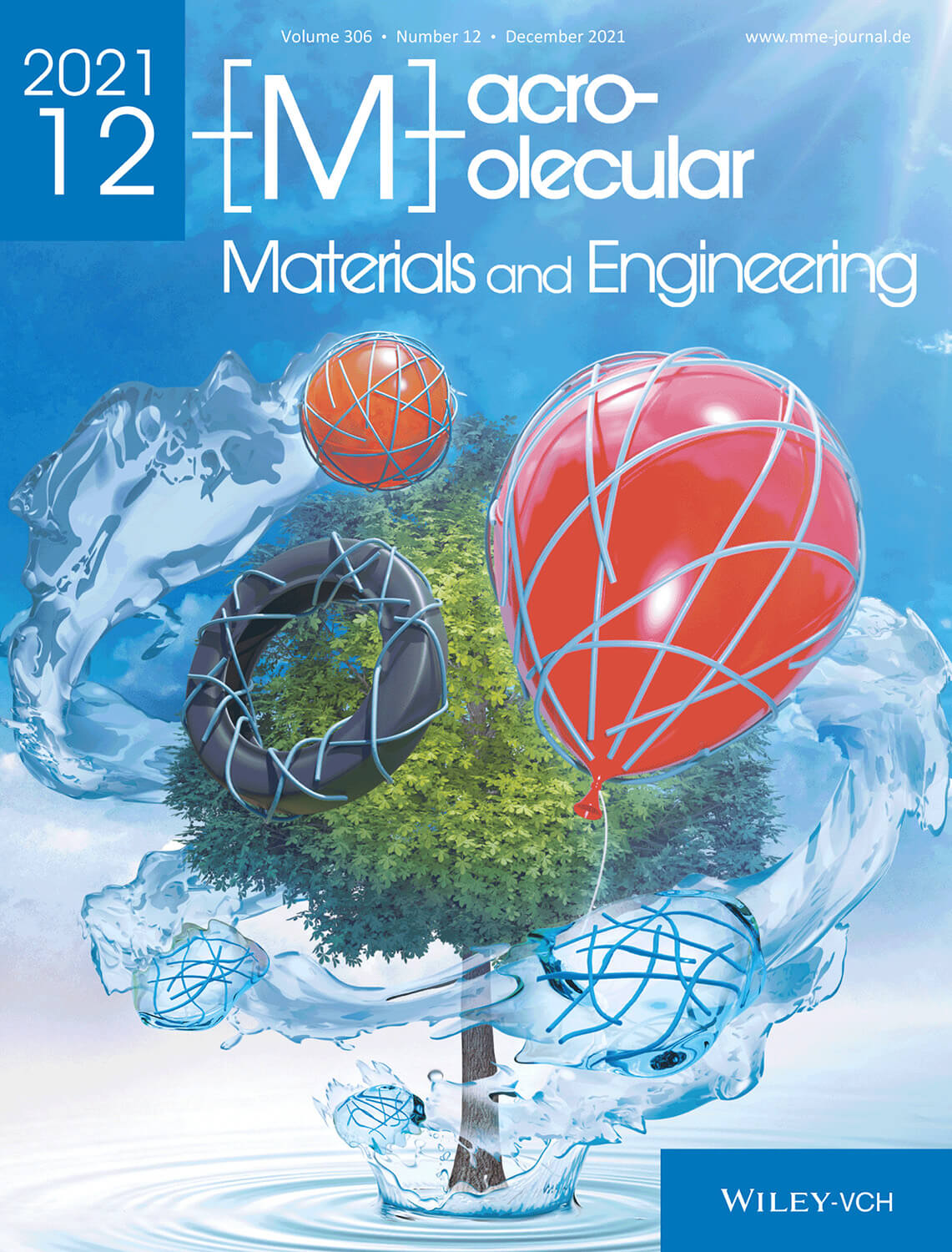論文雑誌「Macromolecular Materials and Engineering」のカバーアートを制作しました[東京大学]
弊社で制作しました東京大学 磯貝明先生のカバーアートが
Wiley社が発行する学術雑誌 Macromolecular Materials and Engineering
2021年12月号に選ばれました。

大学院農学生命科学研究科
磯貝明先生
16 December 2021 Link
Toru Noguchi, Yasuo Bamba, Takashi Miura, Rie Iwamoto, Morinobu Endo, Akira Isogai
A resorcinol resin/water dispersion and a rubber latex are added to 1% 2,2,6,6,-tetramethylpyperidine-1-oxyl (TEMPO)-oxidized cellulose nanofibers (TEMPO-CNFs) dispersed in water, followed by oven drying at 40 °C for 20 h to prepare a dried TEMPO-CNF/resorcinol resin/latex rubber (DTRL) mixture with a weight ratio of 1/0.5/3. DTRL is then added to a nitrile-butadiene rubber (NBR) or a carboxy group-containing NBR (X-NBR) sheet, and the mixture is kneaded by a two-roll mill at 20–30 °C with high shear forces. The tensile strength and Young's modulus of the crosslinked DTRL/rubber composite sheets remarkably increased from 10 and 12 MPa, respectively, for the reference sheet to 24 and 82 MPa, respectively, for the DTRL/rubber composite sheets containing ≈10 vol% TEMPO-CNFs. Scanning electron microscopy revealed that no TEMPO-CNF agglomerates are present in the DTRL/rubber composite sheets. The tensile properties of the composite sheets are the best when a X-NBR sheet and NBR latex are used as the matrix rubber and latex in DTRL preparation, respectively. When water-extracted DTRL (WDTRL, mass recovery ratio ≈94%) is used in place of DTRL, the WDTRL/rubber composite sheets show sufficient water resistance, while the tensile properties are almost the same as those of the DTRL/rubber composite sheets.
Link